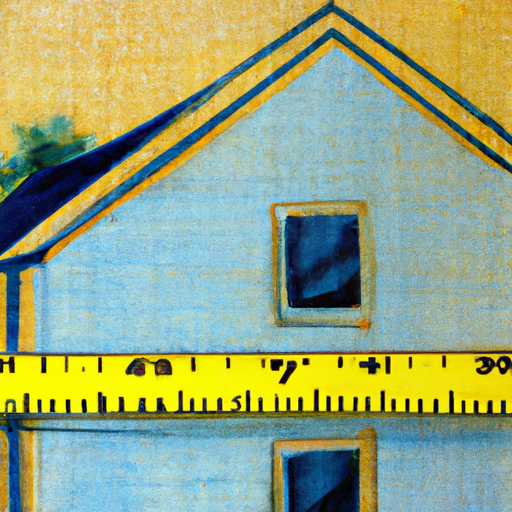This article emphasizes the importance of accurately calculating square footage in the real estate industry. It provides a step-by-step guide for calculating square footage, highlights its impact on property value, and discusses its role in attracting buyers. It also emphasizes the use of real estate platforms like Redfin for finding homes with desired square footage.
Are you in the market for a new home? Or perhaps you’re considering selling your current property? Whatever the case may be, understanding the square footage of a house is crucial in the world of real estate. Whether you’re a buyer or a seller, knowing the exact size of a property can greatly impact its value and desirability. In this article, we will guide you through the process of calculating the square footage of a house, providing you with valuable tips and tricks along the way. We will also explore why square footage matters and how it can be used as a key factor in both buying and selling decisions. So, if you’re ready to dive into the world of square footage and its significance in the real estate market, keep reading.
- 1. “Understanding the Importance of Calculating Square Footage in Real Estate”
- 2. “Step-by-Step Guide: How to Accurately Calculate the Square Footage of a House”
- 3. “Maximizing the Value of Your Property: Why Square Footage Matters”
- 4. “Finding the Perfect Home: Using Square Footage as a Key Buying Factor”
- 5. “Calculating Square Footage: Tips and Tricks for Sellers and Buyers in the Real Estate Market”
1. “Understanding the Importance of Calculating Square Footage in Real Estate”
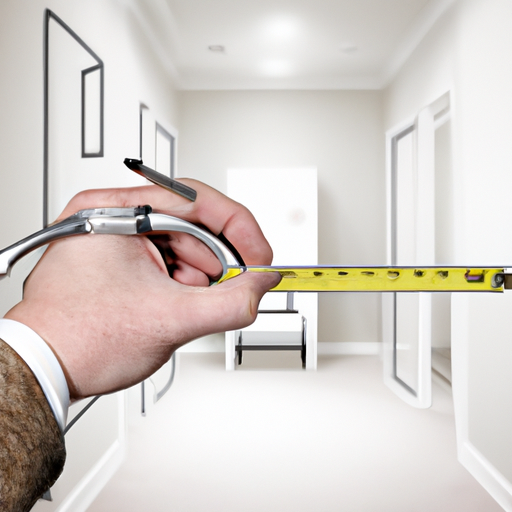
Understanding the Importance of Calculating Square Footage in Real Estate
When it comes to buying or selling a house, square footage is an essential factor that both buyers and sellers consider. The square footage of a house refers to the total area of the living space within its walls, including all rooms and common areas. It is an important measurement that provides a clear understanding of the size and value of a property.
For buyers, knowing the square footage of a house is crucial in determining whether it meets their needs and preferences. It helps them assess if the property has enough space for their family, belongings, and any specific requirements they may have. Additionally, knowing the square footage allows buyers to compare different properties and make informed decisions based on their budget and desired living space.
On the other hand, sellers benefit from accurately calculating the square footage of their house to determine its market value. The size of a property plays a significant role in its pricing, as larger homes typically command higher prices. By providing potential buyers with the precise square footage, sellers can attract the right audience and generate more interest in their property.
Moreover, square footage calculations are also important for real estate agents and listing websites like Redfin. These platforms rely on accurate square footage data to provide users with relevant search results and ensure that listings are categorized correctly. Buyers often use filters based on square footage when searching for homes for sale, making it essential for sellers and agents to provide accurate information to reach their target audience.
It’s worth noting that calculating square footage can be a complex process, as it requires measuring the dimensions of each room and accounting for any unique features or irregularities. Hiring a professional appraiser or using specialized software can help ensure accurate measurements. Additionally, it’s important to keep in mind that square footage calculations may vary from one jurisdiction to another, as different regions have specific rules and regulations regarding what is included in the measurement.
In conclusion, understanding and accurately calculating the square footage of a house is crucial in the real estate industry
2. “Step-by-Step Guide: How to Accurately Calculate the Square Footage of a House”
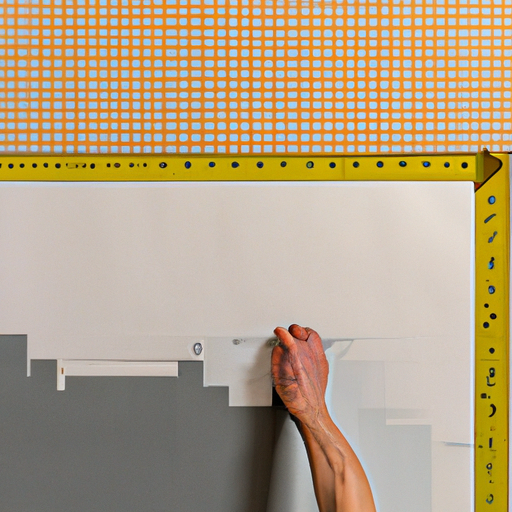
Step-by-Step Guide: How to Accurately Calculate the Square Footage of a House
Calculating the square footage of a house is essential when buying or selling a property. It helps determine the value of the house and provides valuable information for potential buyers. While it may seem like a complex task, with the right approach and attention to detail, anyone can accurately calculate the square footage of a house. Follow these step-by-step instructions to ensure an accurate measurement:
1. Gather the necessary tools: To measure the square footage of a house, you will need a measuring tape, graph paper, a calculator, and a pen or pencil to record the measurements.
2. Start with a floor plan: Begin by obtaining a floor plan of the house, if available. This will serve as a guide and help you visualize the layout of the house as you measure each room.
3. Measure room by room: Begin measuring each room individually. Start at one corner of the room and measure along the walls, noting down the length of each wall. Be sure to measure from the inside edge of the wall, excluding any baseboards or moldings.
4. Account for irregular spaces: In rooms with irregular shapes, such as nooks or alcoves, measure each segment separately. Break down complex shapes into smaller rectangles or squares to simplify the calculations.
5. Include hallways and closets: Don’t forget to measure hallways and closets as well. Although these spaces may not contribute significantly to the overall square footage, it’s important to include them in your calculations for accuracy.
6. Account for sloped ceilings: In rooms with sloped ceilings, measure the height at the tallest point and at the shortest point. Multiply the average height by the width of the room to calculate the square footage.
7. Calculate each room’s square footage: To find the square footage of each room, multiply the length of each wall by its corresponding width. Add up the individual measurements for all the rooms to obtain the
3. “Maximizing the Value of Your Property: Why Square Footage Matters”
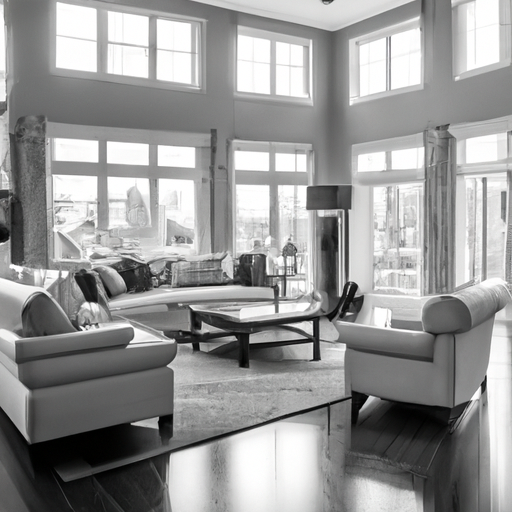
When it comes to buying or selling a property, square footage plays a crucial role in determining its value. The size of a house is one of the first things potential buyers consider, as it directly impacts their comfort and lifestyle. Additionally, square footage is often used as a basis for comparing the prices of different properties in a given area. Therefore, maximizing the square footage of your house can significantly increase its overall value.
One advantage of having a larger square footage is the increased living space it provides. More square footage means more rooms, which can be utilized for various purposes such as bedrooms, offices, or recreational areas. This flexibility can attract a wider range of potential buyers, increasing the demand and value of your property.
Furthermore, a larger house allows for more storage space. Many homebuyers prioritize ample storage options when searching for a property. Having extra square footage allows you to incorporate larger closets, pantries, or even a dedicated storage room, making your property more appealing to buyers.
In addition to the practical benefits, a larger square footage can also create a sense of luxury and grandeur. Spacious rooms and open floor plans can make a property feel more upscale and desirable. This can lead to higher offers and a quicker sale, ultimately maximizing the value of your property.
When listing your house for sale, highlighting the square footage prominently in your marketing materials is essential. Potential buyers often filter their search based on square footage, so including this information in your listing can attract the right audience. Utilize popular real estate platforms like Redfin, which offer specific search options for buyers interested in homes of a certain size.
Overall, square footage matters when it comes to maximizing the value of your property. By increasing the living space, providing ample storage options, and creating a sense of luxury, you can attract more buyers and potentially sell your house at a higher price. So, whether you’re buying or selling, it’s crucial to consider the square footage of a house as a key factor in real estate
4. “Finding the Perfect Home: Using Square Footage as a Key Buying Factor”

When looking to buy a new house, there are several factors to consider. One important aspect that potential buyers often take into account is the square footage of the property. Square footage refers to the total area of a house, including all of its rooms, hallways, and other interior spaces.
Using square footage as a key buying factor can provide insights into the size and layout of a home, helping buyers determine if it suits their needs and preferences.
Firstly, square footage can give you a sense of the overall spaciousness of a house. If you have a large family or enjoy entertaining guests, you may prefer a home with ample room for everyone to move around comfortably. On the other hand, if you are downsizing or looking for a cozier space, a smaller square footage may be more suitable.
Square footage can also impact the functionality of a home. It allows you to evaluate the number and size of the rooms, helping you determine if the house meets your specific requirements. For example, if you work from home and need a dedicated office space, having enough square footage to accommodate an office becomes crucial.
Furthermore, square footage can influence the potential for future growth or renovations. If you have plans to expand your family or add new amenities to your home, having extra square footage can provide the flexibility to make those changes without feeling cramped or limited.
When searching for houses for sale, various real estate websites like Redfin provide square footage information for each listing, making it easier to filter and narrow down your options. By using keywords like “homes for sale” or “buy house” along with location-specific keywords such as “Redfin San Diego,” you can find the perfect home that matches your desired square footage.
In conclusion, square footage plays a vital role in the home-buying process. It helps determine the spaciousness, functionality, and potential for growth of a house. By utilizing square footage as a key buying factor and leveraging real estate websites like Redfin, potential buyers can
5. “Calculating Square Footage: Tips and Tricks for Sellers and Buyers in the Real Estate Market”
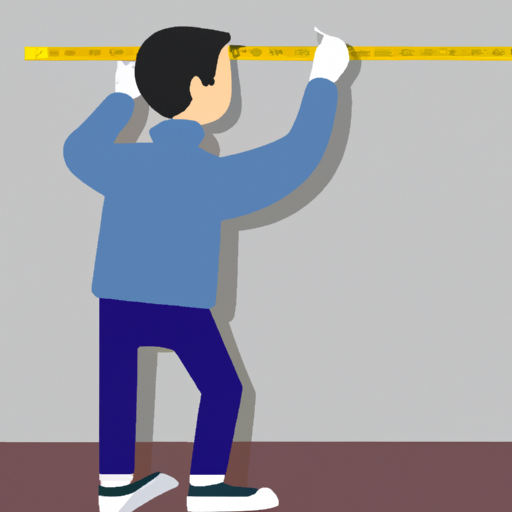
Calculating the square footage of a house is an essential step for both sellers and buyers in the real estate market. Accurately determining the square footage helps sellers set the right price for their property, while buyers can ensure they are getting what they pay for. Here are some tips and tricks to make this calculation process easier and more reliable.
1. Understand the Measurement Standards: It’s crucial to be aware of the measurement standards used in your area. In the United States, the most common standard is the ANSI (American National Standards Institute) standard. This standard defines how to measure and calculate the square footage of a house consistently. Familiarize yourself with these standards to ensure accuracy.
2. Measure the Exterior: To calculate the square footage of a house, start by measuring the exterior dimensions. Use a measuring tape to measure the length and width of each room. Include all living spaces, including bedrooms, bathrooms, living rooms, kitchens, and any other enclosed areas.
3. Factor in Odd Shapes and Angles: Not all rooms have a simple rectangular shape. To calculate the square footage of irregularly shaped rooms, divide them into smaller, more manageable shapes. For example, if a room has an L-shaped area, divide it into two rectangles and calculate the square footage of each separately. Then, add the areas together.
4. Include Staircases and Hallways: Don’t forget to include staircases and hallways in your calculations. Although these areas may not be considered “living spaces,” they still contribute to the overall square footage of the house.
5. Exclude Unfinished Areas: When measuring the square footage, exclude unfinished areas such as basements, attics, and garages unless they have been converted into livable spaces. These areas are often not considered when determining the value of a house.
6. Use Technology: Take advantage of technology to simplify the process. There are various apps and online tools available that can help you measure and calculate the square footage of a house
In conclusion, accurately calculating the square footage of a house is crucial in the real estate market. It not only helps sellers in maximizing the value of their property, but also assists buyers in finding the perfect home that suits their needs. By following the step-by-step guide provided in this article, both sellers and buyers can ensure that they have an accurate measurement of the square footage. This knowledge can be beneficial for sellers looking to attract potential buyers and for buyers looking to make informed decisions. Whether you are buying or selling a house, understanding the importance of square footage is essential in the real estate market. So, make sure to utilize the tips and tricks mentioned in this article to make the most out of your real estate journey.

